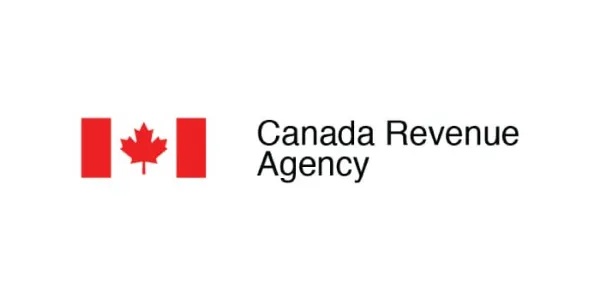
I inherited a large sum of money from my aunt. Do I have to pay income tax on it?
To most of us, it’s a familiar feeling. Winter is coming to an end and spring is around the corner, but so is tax time. Instead of dreading tax season, learn to enjoy it (or at least tolerate it) by understanding your tax return and how income taxes work.
What you should know
“Growing up, I never had to worry about preparing my tax return. I’d pass off my information to my parents’ accountant, and he’d take care of it for me. When I moved away from home, I figured I’d take a crack at it myself. It took me some time to understand all the moving parts, but now I handle my taxes on my own. It’s empowering!”
– Janine, Penticton, BC

Income tax is a tax you pay on the money you earn as income. That includes income from:
work
running a business
renting a house or apartment
investments
Every year, you must report to the federal government how much income you earned. You do this by filing an income tax return with the Canada Revenue Agency (CRA). The CRA is the government office in charge of income tax. Based on how much you earned, the CRA collects a percentage of your income in taxes.
If you lived and earned income in BC, you must pay income tax to the provincial government. You report BC income tax to the CRA as part of your federal income tax return.
It's a good idea to file even if you don't need to
Even if you’re not required to file an income tax return, it’s a good idea to do so. By filing, you may receive an income tax refund or other government benefits and credits. You can also use your tax documents to qualify for certain government programs, like subsidized health insurance.
You must file an income tax return if you’re a resident of Canada for tax purposes and you owe tax or want to receive a refund.
Canadian residency for tax purposes isn’t the same as residency for immigration purposes. People who may be considered residents for tax purposes include:
Canadian citizens and permanent residents
refugees
temporary residents, such as foreign students and foreign workers
You become a resident of Canada for tax purposes when you establish significant residential ties in Canada. Residential ties include:
a home in Canada
a spouse and dependents who move to Canada to live with you
personal property in Canada, such as a car or furniture
If you’re outside of Canada, you may still be considered a Canadian resident for tax purposes if you have residential ties in Canada. In this case, you need to pay income tax on your worldwide income.
In Canada, income tax is calculated using a progressive tax rate schedule. This means that people who earn more income are taxed at a higher rate than those who earn less. This goes for both federal and provincial income tax.
The amount of income tax you pay depends on which tax bracket you fall within. A tax bracket is a range of taxable income for which a certain tax rate applies. To see the current federal tax brackets, visit the federal government’s website. The provincial tax brackets are listed on the provincial government’s website.
You can use this tool to estimate your income tax obligation.
In Canada, employers are responsible for collecting income tax from their workers on behalf of the government. They do this by deducting a portion of the worker’s earnings on each pay cheque.
If, when you file your tax return, it turns out you owe less income tax than what your employer collected from you, you’re entitled to a refund. If you owe more, you must pay the balance.
Self-employed workers are responsible for paying income taxes on their own. We explain this further in our guidance on self-employment.
Self-employed workers may be entitled to a refund
If you’re self-employed and you pay your tax contributions in advance, you may be entitled to a tax refund.
In Canada, some sources of income are non-taxable. That means you can leave them out of your income tax calculations, and you don’t need to report them to the CRA.
Payments from the government
Certain amounts paid by the government aren’t taxable. These include:
Goods and Services Tax credit
Canada Child Benefit payments
Child assistance payments
Compensation from the provincial government if you were the victim of a criminal act or a car accident
Gifts and inheritances
Unlike many other countries, Canada doesn’t have a gift or inheritance tax. If you receive a gift, even from someone related to you, you don’t have to pay tax on it. Similarly, if you inherit money, you don’t pay tax on it.
However, any income generated by the amount you receive (for example, interest in a bank account) is taxable.
Tax-free savings accounts
A tax-free savings account (TFSA) is a way for you to set aside money tax-free throughout your lifetime. If you have a TFSA, you can make contributions to it and use it to make investments. The income you earn in the TFSA isn’t taxable, and neither are the withdrawals you make from the account.
Other payments
Other non-taxable payments you may receive include:
lottery winnings
amounts paid by Canada or an ally for disability or death due to war service
strike pay received from your union
By claiming tax deductions and tax credits, you can reduce the amount of income tax you pay.
A tax deduction reduces the amount of income you pay tax on. You deduct certain expenses from your total income to arrive at your taxable income.
A tax credit, on the other hand, reduces the amount of tax you pay on your taxable income. In other words, you owe less tax. Some tax credits are non-refundable — they reduce or cancel your taxes payable. A refundable tax credit is a credit that can be paid to you even if you have no income tax payable.
For a list of deductions and credits you can claim, visit the federal government’s website.
The deadline for filing your income tax return is April 30 of the following year. So if you’re preparing your 2020 return, you have until April 30, 2021 to file it.
If you’re self-employed, or you have a spouse or partner who’s self-employed, you both have until June 15 of the following year to file.
Pay your income taxes
Before turning to your income tax return, collect the documents and information you’ll need.
If you were employed or earned investment income during the year, you’ll receive “slips” from your employer or financial institution. These slips have information you’ll need to include in your return. Some common examples are:
T3 statement of trust income
T4 statement of remuneration paid
T5 statement of investment income
If you haven’t received a tax slip for the current year, you can ask the issuer of the slip for a copy. You can also access your tax slips on the CRA’s website.
You should also gather receipts for any credits you’re claiming (for example, tuition fees).
Coronavirus benefits are taxable income
If you received coronavirus emergency or relief benefits, these are considered taxable income. That means you must report the total amount you received in your tax return. You’ll receive a T4A or T4E tax slip in the mail with the information to enter in your return.
If your tax return is relatively simple, you can prepare and file it on your own — usually for free. You have the option of filing a paper copy of your tax return or filing online. If you want to file a paper copy, you can pick one up at a Service Canada office or ask the CRA to mail you one.
Generally, your best bet is to do it online. It’s easier to catch errors that way, and it’s less likely that you’ll miss tax credits that you may be entitled to.
Filing a tax return online
The CRA’s electronic tax-filing service is called NetFile. To file online, you need to use a NetFile-certified tax software. You can purchase this type of software at a retail store or download it over the internet. The CRA provides a list of tax software approved for NetFile. Note that some of the software packages are free for everyone, and some are free if you have a low-income or a simple return.
When you file using NetFile, you don’t need to mail in any of your tax slips or receipts (unless the CRA asks for them later). You’ll also get immediate confirmation that they received your return. If you’re entitled to a refund, you should get it within two weeks of filing.
Certain types of tax returns can’t be sent to the CRA using NetFile (for example, if you’re a non-resident of Canada). See the CRA’s website for a full list of restrictions.
You can get help with filing your tax return
You can have an accounting, bookkeeping or financial-planning organization prepare and file your tax return for you. If you decide to see a professional, make sure they’re trained in the preparation of tax returns. If they make an error, you could be on the hook for any penalties.
Find a reputable firm to help you
If a person charges you a fee for preparing your tax return, they must sign their name as a “preparer” on your return. If they refuse to do so, don’t use them! Instead, find a reputable firm that will stand behind their work.
If you have a modest income and a simple tax situation, you can get help at a free tax clinic. Volunteers at the clinic may be able to complete your tax return for you. Free tax clinics are generally offered between March and April each year, but some are open year-round. You can do a search on the federal government’s website to find a clinic near you.
Once the CRA has reviewed your tax return, they’ll send you a notice of assessment. This document tells you how much tax you owe, or the refund you’re entitled to.
If you owe income tax, you typically have the option of paying in a lump sum or in installments. You can pay online or in person. See the federal government’s website for the full range of payment options.
If you disagree with your assessment and want to dispute it, you can file a formal objection. You have 90 days from the date of your assessment to file a dispute.
Sign up for direct deposit
If you’re entitled to a tax refund, the quickest way to receive it is to sign up for direct deposit. This will likely shave 3-5 days off of your wait time. You can sign up for direct deposit through your CRA account.
Who can help

Canada Revenue Agency
The government office that oversees income tax in Canada.


